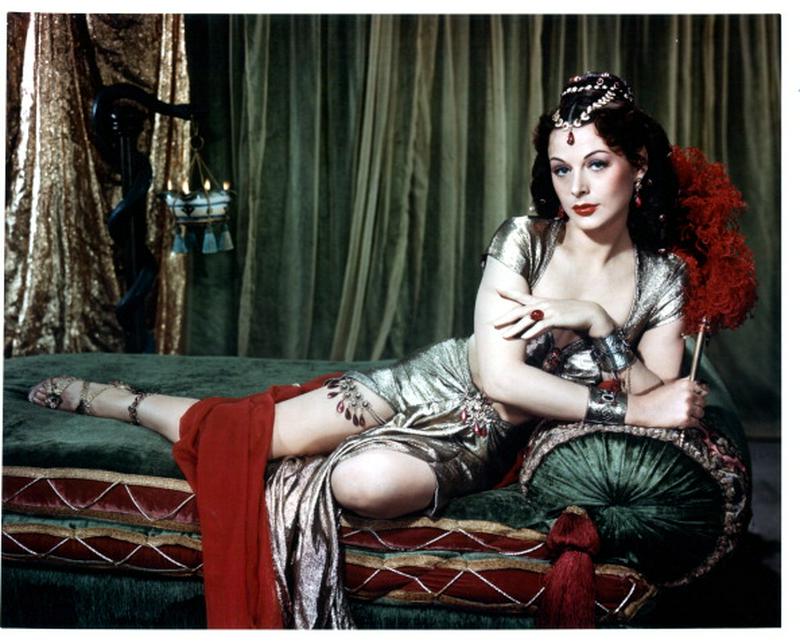Hedy Lamarr: More Than Just the Most Beautiful Woman in Films
By | July 5, 2019

Renowned as a femme fatale during MGM’s “Golden Age,” actress Hedy Lamarr was more than just a pretty face. While she has been quoted as saying the key to being glamorous was to just “stand still and look stupid,” she proved to be anything but stupid when she helped develop a technique for spread spectrum communications which is currently used in satellite and cell phone technology.
She was born Hedwig Eva Maria Kiesler on November 9, 1913, in Vienna, Austria, as the daughter of a wealthy Viennese banker. She began her education through private tutors at age four and by age ten could speak four languages and was both a skilled dancer and pianist. She enrolled in Max Reinhardt’s drama school in Berlin at the age of sixteen. The following year, she appeared in her first film, Geld auf der Strasse (1930; Money on the Street). However, it was the 1932 Czech film Extase (Ecstasy) for which she gained international recognition.

Her acting career was temporarily suspended in 1933 when she married Austrian munitions manufacturer Fritz Mandl. Not only was Mandl responsible for selling weapons to the Nazis, but he was also extremely possessive. He forbade her from acting and attempted to destroy all copies of Extase. In 1937, she left Mandl and moved to Hollywood where she began acting with MGM under the name Hedy Lamarr. She would eventually complete the naturalization process and become a U.S. citizen in 1953.

Her first English-language film, Algiers, which co-starred Charles Boyer, was released in 1938 and was an immediate success. She went on to appear in Lady of the Tropics (1939) with Robert Taylor, Boom Town (1940) with Clark Gable and Spencer Tracy, Tortilla Flat (1942) also with Tracy, and Samson and Delilah (1949) with Victor Mature. Rumor has it, she was also considered for the heroine in Casablanca (1943), though that role was filled instead by Ingrid Bergman. Lamarr briefly set up her own production company in 1946.

Despite keeping herself busy in Hollywood, Lamarr still had time in 1942 to team up with her friend, composer George Antheil, to develop a “Secret Communications System,” an electronic device to minimize the jamming of radio signals. It was originally intended to keep the Nazis from decoding messages. The device was never used for its intended purpose, but it was instrumental in the development of later technology used to maintain the security of both military communications and cell phones today. Lamarr did not receive any recognition for the invention at the time, but in 1997 both Lamarr and Antheil were awarded the Electronic Frontier Foundation Pioneer Award and Lamarr became the first woman to receive the highly prestigious BULBIE Gnass Spirit of Achievement Award.

Lamarr retired from acting after her last film, The Female Animal (1958), though she made a cameo appearance in the 1990 film Instant Karma. In 1966, she published an autobiography, Ecstasy and Me, but later sued the publisher for misrepresentation. She also caught the public’s attention twice by being arrested for shoplifting, once in 1966 and then again in 1991. She was cleared of the charges both times. Lamarr married six times and had three children - James, whom she adopted in 1939 while married to her second husband, Gene Markey, as well as her two biological children, Denise (born in 1945) and Anthony (born in 1947) with her third husband, John Loder. In the end, however, she died alone on January 19, 2000, at the age of 86, after living for some time as a recluse in Casselberry, just north of Orlando Florida.

